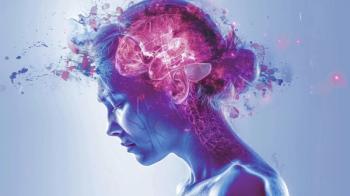
The Biocognitive Model for Biopsychosocial Psychiatry: Niall McLaren, MBBS, FRANZCP
Does a computational approach to the mind pave the way for practicing a biopsychosocial psychiatry?
CONVERSATIONS IN CRITICAL PSYCHIATRY
Niall (“Jock”) McLaren is an Australian psychiatrist. He is Honorary Research Fellow in the Department of Philosophy at University of Queensland. He recently retired after nearly half a century of practice, including 25 years in the far north of Australia. He has extensive experience in remote and military psychiatry and posttraumatic states. He has published extensively on the application of the philosophy of science to psychiatry, most recently with a formal integrative theory for psychiatry, the biocognitive model. He was previously interviewed as part of this series in Psychiatric Times™ in
Aftab: Since your participation in this series in 2019, you have written and published your new book Natural Dualism and Mental Disorder: The Biocognitive Model for Psychiatry.2 I am excited to have you back in the series to discuss the details of your model. Our earlier exchange gives the readers a fair idea of your discontents with contemporary psychiatry. Let’s begin with the notion of “natural dualism.” What do you mean by that, and how does it differ from the more commonplace notion of “dualism” that many mental health professionals are familiar with?
McLaren: Thank you, and that is an important question to start with. Talking philosophy to a psychiatric audience is never easy, as too many psychiatrists seem to think that they are biological scientists, so it does not apply to their activities—but it does.
Historically, dualism relates to the French polymath, Rene Descartes (1596-1650), who said mind and body are composed of 2 different substances: the physical stuff of bodies and brains, and the mental stuff of the mind, each requiring nothing other than itself to exist. That leads to the problem of how those substances can possibly interact—the classic
Natural dualism says “Yes, mind and body are profoundly different, with no properties in common, but mind arises from the brain by natural, law-like processes (laws of supervenience),” which we can probably understand. The idea is closely associated with philosopher David Chalmers, but very explicitly, there is no magic involved. My work takes it further and offers a biological mechanism by which a nonphysical mind supervenes upon or emerges from the physical brain. I have suggested what those laws are, but crucially, it uses processes that we have known about for a long time.
Aftab: You present a computational model of the mind as an informational space. What do you see as the boundaries of your notion of the “mind” here? When it comes to psychological processes such as memory and perception, which possess an essential neurobiological dimension, where does
McLaren: This can be confusing because we are sentient beings; our entire perception of ourselves is based in this point. We are first and foremost information detectors, collectors, processors, storers, and transmitters. In the book, I derive a formal definition of information, but essentially, it is what we know and experience—what we can act on and communicate. That is the result of the brain doing its job as a very high-speed, multichannel information processor of ineffable complexity. The main boundary of the mind is that it is utterly private. My brain generates my mind, and you cannot share it unless I use speech or action to convey a small part of it. The next boundary is that the sense of mind or consciousness the brain generates is completely dependent on the healthy brain. Even slight variations in physiology, such as a fever, can interfere with the natural process of generating the mind. We call that confusion or delirium. Physicians have to be very aware of it.
Descartes said that if you want to know the mind, the only place to start was in the dissecting room, and I totally agree. It is not possible to understand the concept of a mind emerging from the brain without a detailed knowledge of the brain and neurophysiological processes. This means, of course, that if the biocognitive model gets any traction, then the field of a nonmedical psychology will shrink dramatically. But it also means that the concept of a reductionist biological psychiatry is headed for the history books, replaced by a well-grounded mentalist psychiatry.
Aftab: What is your model of personality and
McLaren: I spend quite a lot of time deriving a formal definition of personality, which doubles as a description. Because this is a computational model, not hydraulic as the Freudian model was or static as in DSM terms, personality devolves to the particular set of rules which determines each of us as a unique human being. Remember that this set of rules is vast, and we often do not know what they are, but I explain all of this. Personality must be seen as a very dynamic process, not a fixed thing. What we call a normal personality results from a set of rules which are both internally consistent and consistent with the rules of the larger society, producing a cheerful (euthymic) person who meshes with the surroundings. However, if my rules are internally contradictory, producing distress or confusion, or clash with the larger society’s rules, producing conflict (or both), then we have personality disorder. Of course, my rules can change, for better or for worse. That means personalities can change; they are not genetically fixed. This may be abrupt as in posttraumatic cases, or gradual as in education and life experience. But the biocognitive model allots a much greater role to personality in mental disorder than biological psychiatry does. Biological psychiatry wants to see everything as “chemical imbalances.” No, it is not.
Aftab: How are “mental disorders” defined in the biocognitive model? How does your notion of mental disorder differ from, say, how the DSM understands mental disorders (a syndrome that reflects a dysfunction in the psychological, biological, or developmental processes underlying mental functioning that leads to significant distress or
McLaren: First point to mention: Mental disorder is real. It is as real as hunger or the pain of appendicitis, so the so-called “
In a few words, the biocognitive model says that mental disorder is a state of self-sustaining mental distress and dysfunction. Mental disorder is not like ordinary grief, which resolves itself, or a bit of a fear that people can work on, or being angry over your team losing, because we get over that sort of thing. That is our nature. The mere presence of distress or poor performance does not ipso facto constitute a mental illness—it only becomes mental disorder when it is self-sustaining and the person cannot recover.
The model assigns a major role to personality, to current stressors and to cultural factors, but more importantly, it offers a formal mechanism of integrating psychological (including personality) and sociocultural factors into the clinical picture. DSM does not do that; it does not offer a model of mind or any integrative mechanisms. For all those people who have wanted a genuinely integrative “biopsychosocial model,” here it is.
Aftab: In your model, how does the process become self-sustaining? Are there analogous ways in which information processing in a computer can be self-sustaining? Another prominent approach in psychiatry that emphasizes the self-sustaining nature of mental disorders is the network theory,4 which conceptualizes mental disorders as symptom networks where symptoms are causally related to each other (instead of being caused by a latent variable or a central disease process), and “If these causal relations are sufficiently strong, symptoms can generate a level of feedback that renders them self-sustaining.”4 It seems like there are different ways in which it is possible for us to theorize how psychiatric syndromes become self-sustaining.
McLaren: The process of mental disturbance becomes self-sustaining by a simple feedback loop more or less consistent with what Norbert Wiener described in 1948, the difference here being that part of the loop is cognitive—a matter of what the subject knows and believes. The arrow of causation loops between mental and physical. I have given a number of examples of how seeing or hearing something can generate an unpleasant mental state whose symptoms then cause the person to become more distressed. It is a simple matter; we see it myriad times a day in anticipatory anxiety, but it also applies to normal life.
For example, “Mr Smith” has to give a talk in front of his bosses. He is worried about how he will perform, and his heart starts to beat a bit faster. But he believes a fast pulse means an impending heart attack, so, as soon as he becomes aware of it, he becomes more agitated, which makes it beat faster. Before long, he is so agitated he has to cancel his presentation. That is an easy one—extremely common, for which beta blockers are rapidly effective, and cheap. But the crucial factor is the cognitive element—that the patient must be scared of his own symptoms. I have also emphasised the Challenge Hypothesis and its role in dominance hierarchies, and how the drive to dominance produces its own instability. This is important, not just in psychiatry, but in social and political life.
Network theory, on the other hand, seems to be deficient in that it does not involve this crucial cognitive factor. The concept uses the recursive properties of networks, but inserts symptoms as the nodes, not giving credit to the notion that symptoms do not exist in isolation—that they exist separate from the mind. They are part of a much larger mental state of which the subject’s knowledge state is an integral part. Because network theory is not part of a larger theory of mind, it treats the human as an automaton, not a sentient being. I am not much convinced by these highly abstract theories in cognitive sciences. It always seems to me the theory comes first, then they look for somewhere to apply it.
Aftab: Does your definition of mental disorder exclude any conditions presently classified as mental disorders? For example, would “prolonged grief” count as a mental disorder under your framework?
McLaren: I do not believe in “psychiatry unlimited.” The biocognitive model excludes a lot of what has become “disease” over the past 40 years since DSM-III burst on the scene. Just as
At present, psychiatry locates the disorder in the individual. That is what biology and genomics looks for, but that is an ideological stance. It has no argued basis in science. I will give a reference for that: In the interactive model, some disorders are inherent in the individual, some are wholly reactions to social events, but the great majority are a complex mix of biological, psychological, and social factors. Sorting that out brings back the art of psychiatry.
Aftab: Psychiatric conditions often entail prominent bodily manifestations, such as psychomotor retardation, appetite changes, sleep changes, blunting of affect… how do you conceptualize these physical manifestations of psychiatric disorders in informational terms?
McLaren: Everything we do is mediated by informational flows. I move my index finger: Instructions have been sent as information in neurons via pyramidal tracts to AHC to motor end plate; prior to that, the decision to move it was affected by information processing in the cerebrum, but our technology is not quite up to that task yet. I explain all of this in general terms showing how the mind-body problem can be resolved quite easily using available technology. I give an explanation for blunting of affect in depression and put a lot of emphasis on the role of anxiety in mediating many of the changes we see in mental disorder.
I think anxiety is very important—in fact, I wrote a
Aftab: If mental disorders are purely a matter of informational malfunction, how does your model account for the presence of neurobiological risk factors (such as genetics, HPA axis, inflammation, neurotrophic factors) that influence the probability of experiencing various mental disorders? Similarly, if the mind is purely informational, how do
McLaren: Mental disorder is the overt or experienced manifestation of some disturbance in the brain-mind complex. Remember that when something goes wrong in an informational model, there are 2 aspects to consider: (1) the physical, meaning the brain, and (2) the informational or mental. The initial physical state of the brain is determined by the genome; the most extensive studies so far have failed to find any significant genetic contribution to any single mental disorder. At best, there is a generic tendency to mental disorder which, as I argued in the
All of this is mediated by chemicals except the chemicals are under direct mental control. The mental perception is the first event in a long causal chain. That is directly opposite to what reductionist biological psychiatry says and, I say, explains why they cannot find any primary physical causes to mental disorder. There really are not any. But until now, psychiatry has not had a model of mind tailored to its needs, so they tried to write the mind out of the equation.
Aftab: You have said that the biocognitive model offers “a genuinely bio-psycho-social model.” Can you elaborate on that? What makes this model bio-psycho-social?
McLaren: It is biological in that it says you cannot even begin to work out why the human mind is as it is without taking into account the “wetware” of the entire CNS. And the rest of the body, of course. It is psychological, as it says the mind runs the brain, not the other way around, and it shows just how the mind-body problem is to be approached so that a resolution falls into place. With a formal mentalist theory of mind, firmly grounded in the physical structure and function of the brain, we can integrate social factors into the calculation instead of paying lip service as DSM does. What you believe becomes instrumental in determining how you behave and how you feel, which solves the determinism question: Yes, we most definitely do have free will, but, as
The problem is what has been called “The Great Twentieth Century Prejudice” of insisting that mentalist constructs are necessarily supernatural. This has led to so many dead-ends, biological reductionism, behaviorism, functionalism, the list goes on. We humans have mental capabilities. The problem for science is to give account to them, not write them out of the equation.
Aftab: “Primary physical causes” aside, I want to clarify something here. You emphasize the direction of causality from mind to the brain (eg, “mind runs the brain”). You also mention the importance of biology, which suggests a bidirectional causal relationship. Do you think that the mind-to-brain casual interactions are more important in the case of mental disorders than brain-to-mind interactions?
McLaren: Yes. That is the whole thrust of the model: to outline mechanisms by which the individual’s knowledge state triggers the emotional reactions, which are seen as “mental illness.” Anxiety, as I argued in my little monograph, is the model of a pure psychological disorder—there is no brain disease at all. The cognitive model relies on the feedback loops which I mentioned before. Remember the loop goes from mind to body and back to mind again, where the reinforcement occurs. In grief, it is the knowledge that something precious has been lost that triggers the emotional reaction, of misery, despair, hopelessness, etc.
The principle here is important: Psychiatry has to acknowledge that mental states have mental causes. There is in principle no way a mental state can be reduced to a physical state of the brain—that confuses the product with the mechanism. Yes, I know that people like Eric Kandel and Richard Carrier and so many others are sure it can be—all that is lacking is a model. I would like to see one, but they have never produced it.
Aftab: Does the biocognitive model have any implications regarding how psychiatric disorders should be classified?
McLaren: It certainly does. It immediately says that the current categorical approach to mental disorder, in the form of the DSM system, will not work. That is not new; even Thomas Insel said it. The biocognitive model requires a dimensional approach, which was entertained for personality disorder in
Aftab: Since you do accept that taking into account the “wetware” of the CNS is essential, what sort of neuroscientific research do you think it makes more sense for psychiatric researchers to pursue?
McLaren: The first thing for any psychiatric researcher is to work out what psychiatrists should be studying, meaning they have to write their model of mental disorder. There cannot be a research program without a model of the field; that is not science. We do not need to be doing any “neuroscientific research”—we need a consensus on the nature of mental disorder and the best way of approaching it. For example, look at the vast sums of money spent on genomic research with, even its most ardent supporters would agree, skimpy results that have never influenced treatment in any way. But who proved that mental disorder has a genetic basis? Nobody—it was just assumed as an article of faith. You might not remember the “biogenic amines in the hypothalamus” story, or taraxein or minimal brain damage; the research preceded the elementary process of working out whether these things were possible. It was only when the research failed that people wondered if it ever had a chance, but by then they had moved on to the next fad.
That is what the biocognitive model is about: Here is an articulated model that starts with first principles and builds a structure that can be tested. It says, “The great bulk of ordinary mental disorder is wholly psychological with no underlying brain disorder.” It does not actually need much basic research; we can comfortably ride on other researchers’ work. But regardless, the model has to come before any research program is written, the model dictates the research program, and psychiatry has never done that.
Aftab: Critical psychologists in the United Kingdom (eg, proponents of the Power Threat Meaning Framework and DropTheDisorder movement) vehemently reject the notions of “disorder” and “dysfunction” entirely and prefer to see psychiatric conditions as “normal understandable reactions to life circumstances.” What would you say to such critics in defense of your continued use of the term “disorder”?
McLaren:I have never heard of those movements, but it sounds like they are the latest version of Szasz's theme.
Anxiety is the only recursive human emotion; it can act back on itself to reinforce and intensify itself. Anxiety is serious—do not believe anybody who says otherwise. It becomes the exemplar of the serious mental disorder that arises in the setting of a perfectly healthy brain. Is this possible? Of course, because there are 2 realms in the biocognitive model: the physical or brain level and the psychological or informational level. Errors can occur in either of them. In an information processor, can glitches in data input or the processing algorithms cause the machine to seize up or shake itself to bits? That is a no-brainer.
Aftab: In cognitive sciences, we have seen a shift toward what are called the 4E approaches according to which mental processes are Embodied, Embedded, Enacted, and Extended.7 4E approaches are skeptical that cognition can be described fully in terms of abstract processes such as computations and representations and argue that we must refer to bodily mechanisms and active interactions between the organism and the environment when talking about cognition. Do you see any incompatibility between your computational view of the mind and the 4E approaches?
McLaren: Oh boy. I was restricted to 70,000 words, so there are lots of topics I did not mention, and bringing in too many esoteric subjects is a great way of losing your readership. I have not read that particular book, and while there are lots of books I have not read, my impression is that my work is entirely consistent with their approach. I have always said that if a model of mind does not generate a model of mental disorder, it is not worth the paper it is printed on. The available models of mind, and I do not want to sound as though I am picking on him, but Dennett’s functionalism is a good example: It does not lead to a model of mental disorder. We can discard all those models. But the Embodied Cognition model—yes, I am 110% on the same side as they are. What did you say? “We must refer to bodily mechanisms and active interactions between the organism and the environment when talking about cognition.” Yes. Totally agree. I have just written a book about that. That means for the first time in its history, psychiatry is right up with the latest trend in philosophy.
And there is another book illustrating this point due out at the end of this year. Last year, I was feeling a bit tired of psychiatry, so I decided to apply the biocognitive model to a different field—one that interests me: politics. Specifically, I looked at the question of ultra-right-wing extremism, aka fascism. The biocognitive model gives a novel view of this crucial topic, but it is not “psychiatry unlimited” because it concludes, “These people are not mentally ill.” It is a growing field, and it all goes back to dualism. Descartes was on the right track after all. Thanks for your questions; it is an interesting field.
Aftab: I found your account of natural dualism and its application to psychiatry quite interesting, despite some reservations. I am curious to see how it will be received by philosophers of mind and philosophers of neuroscience, as these are highly contested and actively debated issues with many deep disagreements among philosophers. Aside from the intriguing discussion of natural dualism based on information processing, the notion of mental disorder and biopsychosocial integration that you end up with in the book seem to me to be fairly similar to various existing philosophical and nonreductionistic approaches. It is pretty standard to conceptualize mental disorder in terms of distress and dysfunction (the philosophical challenge that many have taken up in recent years has been to develop conceptualizations of mental disorder that do not rely on notions of dysfunction). The emphasis on self-sustaining has also become prominent in the last decade thanks to network theory but has existed in various forms previously. The dimensional nature of mental disorders also has a long history, represented these days prominently by the Hierarchical Taxonomy of Psychopathology (HiTOP) system. Biopsychosocial integrative approaches to psychopathology have also been around, eg, McHugh and Slavney’s Perspectives approach in the 1980s building on Meyerian and Jasperian foundations, or more recently, we have seen integrative and philosophical accounts offered by Bolton and Gillet (The Biopsychosocial Model of Health and Disease: New Philosophical and Scientific Developments, 2019)8 and Sanneke de Haan (Enactive Psychiatry, 2020). Bolton and Gillet also see biopsychosocial causal interactions in terms of information processing, and de Haan works with the framework of mind as embodied, embedded, and enactive. The novel thing about your book is that you arrive at your conclusions by developing a dualistic account of mind in informational terms, and the strength is that you link your model of mental disorder to a model of mind, but from my point of view, that is also a weakness. Given the lack of philosophical consensus around fundamental questions in philosophy of mind, I do not think that we have to take any particular stance on the viability of your account of dualism to successfully conceptualize psychopathology in dimensional, integrative, and nonreductionistic terms. In other words, to the extent that your vision of psychiatric practice is dimensional, integrative, and nonreductionistic, it is in alignment with existing dimensional, integrative, and nonreductionistic philosophical approaches, and the question for readers such as myself is whether your informational account of the mind is persuasive enough that we want to bet the viability of biopsychosocial integration on it. Your thoughts on this?
McLaren: I agree—there is nothing new under the sun. The difference here is that this model offers a mechanism of mind-body integration. Look at Wittgenstein: no model of mind. Chomsky: no formal model of mind. Dennett: a model of sorts, but no integrative mechanism and no suggestion of mental disorder. Sellars: no model or mechanism. Richard Carrier: avowedly reductionist, but no explanation—no model of mind. Thomas Nagel: interesting, but right at the end of Mind and Cosmos: Why the Materialist Neo-Darwinian Conception of Nature is Almost Certainly False, he says, “However, I am certain that my own attempt to explore alternatives is far too unimaginative.”9 I am not arguing. Bolton and Gillett openly stated: “It is not straightforward to find the right metaphor for the relation between the biological, the psychological and the social” (p33).8 Why did they want a metaphor when they are supposed to be talking about a model? Because they do not have a model. They missed the central point: that merely describing biological, psychological, and sociological factors does not integrate them. I am forever telling people that description is not explanation.
I am not offering a metaphor. The biocognitive model offers a formal computational mechanism to integrate these facets of life which, after all, are just common sense. Of course, some mental disorder arises in brain disease—we have all seen that—but it does not tell us why the same syndromes can arise in the absence of brain disease. Most disorder is a mixture of psychological and social factors in a perfectly healthy brain because, just like a computer, “software” glitches can ruin everything. But the thing is, psychiatrists have got to stop kidding themselves they have a reductionist biomedical or a biopsychosocial or whatever model when, as a matter of demonstrated fact, they do not.
Aftab: Thank you!
Dr Aftab is a psychiatrist in Cleveland, Ohio, and clinical assistant professor of psychiatry at Case Western Reserve University. He leads the interview series “
Dr Aftab and Dr McLaren have no relevant financial disclosures or conflicts of interest.
References
1. Aftab A. Chaos theory with a human face: extended version. Psychiatric Times. October 28, 2019.
2. McLaren N. Natural Dualism and Mental Disorder: The Biocognitive Model for Psychiatry. Routledge; 2021.
3. Watson RA. In: Audi R, ed. The Cambridge Dictionary of Philosophy. University Press; 1995.
4. Borsboom D.
5. McLaren N. Anxiety - The Inside Story: How Biological Psychiatry Got it Wrong. Future Psychiatry Press; 2018.
6. Kahneman D. Thinking, Fast and Slow. Penguin Press; 2012.
7. Gallagher S, de Bruin L, Newen A, eds. The Oxford Handbook of 4E Cognition. OUP Oxford; 2018.
8. Bolton D, Gillett G. The Biopsychosocial Model of Health and Disease: New Philosophical and Scientific Developments. Palgrave Pivot; 2019.
9. Nagel T. Mind & Cosmos: Why the Materialist Neo-Darwinian Conception of Nature is Almost Certainly False. Oxford University Press; 2012.
Suggested Readings
Cells, circuits and syndromes. A critique of the NIMH Research Domain Criteria project. Ethical Human Psychology and Psychiatry. 2011;13:229-236.
McLaren N. The Mind-Body Problem Explained: The Biocognitive Model for Psychiatry. Future Psychiatry Press; 2012.
Chapter 8: Testing the Biocognitive Model: Testosterone and the Challenge Hypothesis:
Chapter 12: Critique of Thomas Szasz: The Major Claims.
Chapter 13: Critique of Thomas Szasz: The Clash of Morality and Empirical Science.
Narcisso-Fascism: the psychopathology of right wing extremism. Future Psychiatry Press; Upcoming November 2022.
Newsletter
Receive trusted psychiatric news, expert analysis, and clinical insights — subscribe today to support your practice and your patients.














